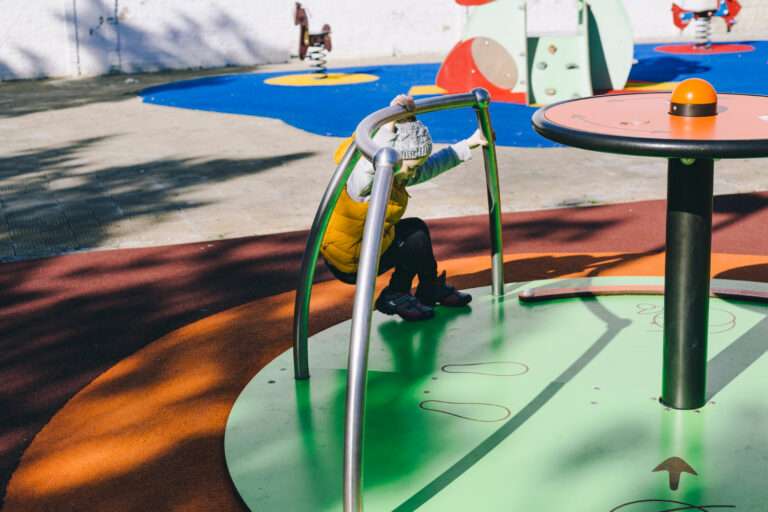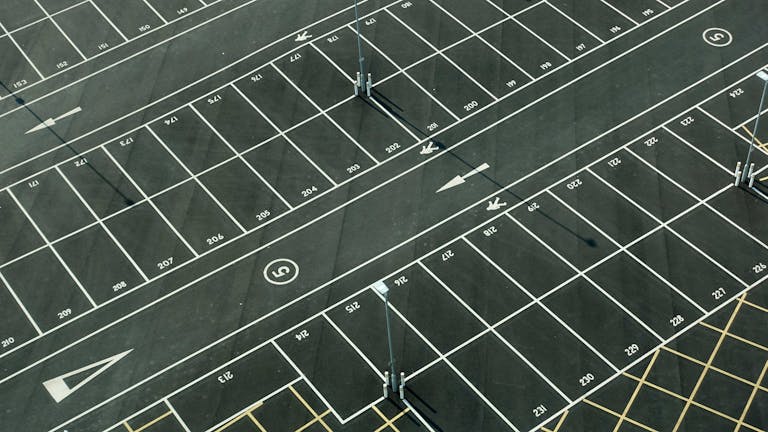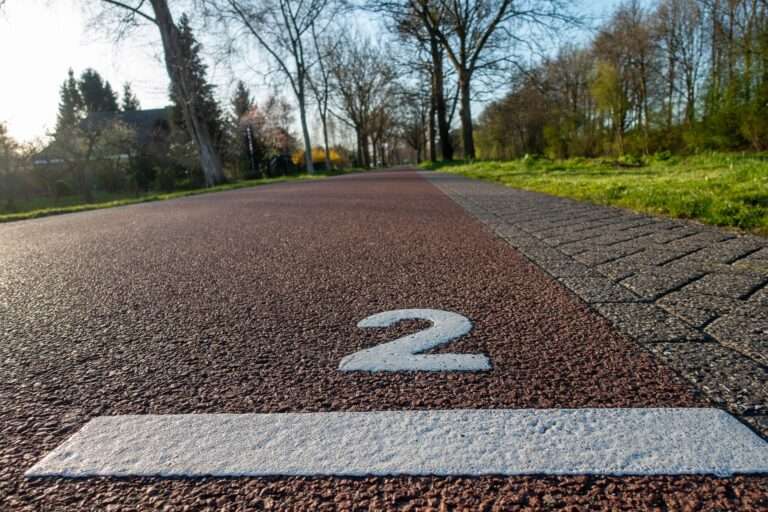The Importance of Safety Surfacing in Playgrounds and Pedestrian Areas
There’s something quietly reassuring about a good surface underfoot. You don’t really notice it when it’s right – firm but forgiving, smooth yet grippy. But when it’s wrong? Everyone feels it. Skinned knees, twisted ankles, or that uneasy sense that a fall could hurt far more than it should.
That’s where safety surfacing comes in. It’s not just a layer of rubber or tarmac – it’s the unseen infrastructure that makes our public spaces safer, more inclusive, and more enjoyable. From school playgrounds to high streets, the right surfacing protects people of all ages while keeping spaces looking inviting.
And here’s the thing: safety surfacing isn’t only about compliance or risk reduction. It’s also about design quality. The colour, texture, and finish can transform a functional space into something that feels well cared for – a place people want to be.
So, let’s look at why safety surfacing matters so much, how compliance works in the UK, and which materials are leading the way in keeping our playgrounds and pedestrian areas both safe and stylish.
What Safety Surfacing Really Means
When people hear “safety surfacing,” they often picture bright rubber playground mats or colourful patterns under climbing frames. That’s part of it – but it’s broader than that.
Safety surfacing simply refers to any installed surface designed to reduce the risk of injury from falls, slips, or impacts. That could be soft pour-in-place rubber, wet pour EPDM, bonded mulch, synthetic turf with shock pads, or even textured asphalt in pedestrian zones.
The aim is to absorb energy on impact, improve traction, and meet national safety standards for fall protection. The right system depends on what the area’s used for. A toddler play zone needs a very different approach from a town centre pavement.
Still, the principle’s the same: prevent injury without compromising usability.
UK Standards and Compliance
Safety in public play areas isn’t just common sense – it’s regulated. The key standard is BS EN 1177, which defines the required critical fall height (CFH) performance for surfacing under playground equipment.
In short, every piece of play equipment has a potential fall height, and the surface beneath it must cushion a fall from that height without causing serious injury.
| Standard | Description |
|---|---|
| BS EN 1177 | Impact-absorbing surfacing for playgrounds (CFH testing) |
| BS EN 7188 | Slip resistance and durability testing for surfacing |
| BS EN 15330-1 | Synthetic turf performance and shock absorption |
| DfT Guidance | Requirements for anti-slip pedestrian surfacing and tactile paving |
For councils and contractors, compliance means more than box-ticking. Surfaces must be tested, certified, and installed correctly on a stable sub-base. Too often, failures happen not because the material’s wrong, but because of poor installation or drainage.
And yes, testing matters. CFH results are lab-tested, but real-world performance can vary with age, temperature, and wear. That’s why maintenance and periodic inspections are just as critical as the initial install.
Why Impact Absorption Matters
A child falling from a swing. A cyclist skidding on a wet bend. An elderly pedestrian tripping on a kerb edge. It’s in these moments that impact absorption earns its keep.
The idea is simple physics – spread and slow the force of a fall. Hard concrete transfers nearly all that energy back into the body. Rubber crumb or bonded mulch dissipates it gradually, reducing the chance of fractures or head injury.
Even a few millimetres of cushioning can make a difference. It’s why schools, councils, and housing developers increasingly opt for safety-rated surfaces in areas that didn’t traditionally have them.
I’ve seen older playgrounds with nothing more than bark chips or bare tarmac under climbing frames – both well past their sell-by date. Compare that with modern EPDM rubber surfacing, which not only cushions falls but resists weathering, stays flat, and drains quickly after rain. Night and day difference.
Types of Safety Surfacing
Not all safety surfaces are equal. Here’s how the main types compare in terms of performance, appearance, and upkeep:
| Surface Type | Material | Best For | Pros | Cons |
|---|---|---|---|---|
| Wet Pour Rubber (EPDM) | Coloured rubber granules bound with resin | Playgrounds, schools | Highly shock absorbent, bright colours, long lifespan | Expensive to install |
| Bonded Rubber Mulch | Recycled rubber shreds | Natural play areas, woodland paths | Eco-friendly, blends with landscape, lower cost | Rougher texture, less colour choice |
| Artificial Grass with Shock Pad | Synthetic turf + underlay | Sports and play zones | Natural look, soft underfoot, low maintenance | Can trap heat, less impact-absorbing |
| Rubber Tiles | Pre-cast interlocking rubber mats | Gyms, schools, nurseries | Quick to install, replaceable sections | Visible joins, needs level base |
| Textured Asphalt / Resin | Bituminous mix or resin-bound finish | Pedestrian and cycle areas | Slip-resistant, durable, affordable | Limited impact absorption |
Each system serves a slightly different purpose. A council might use EPDM near swings and slides, bonded mulch in natural adventure trails, and textured asphalt on footpaths – all part of a cohesive design.
You can see examples of integrated solutions on our asphalt and safety surfacing page, where performance, aesthetics, and maintenance are balanced across multiple surface types.
The Hidden Role of Sub-Bases
A perfect surface on a bad sub-base won’t stay perfect for long. This is one of the most overlooked aspects of surfacing work.
The shock-absorbing layer only performs as intended if the base is stable, level, and well-drained. Waterlogging under rubber causes movement and surface bubbling, while uneven asphalt bases can create thin spots where the fall protection fails.
A well-constructed sub-base – often compacted MOT Type 1 with open-grade stone beneath for drainage – is crucial. I’ve seen surfaces fail in under two years simply because someone skimped on groundwork. You can’t fix that with a power wash.
Design as Part of Safety
Safety and design shouldn’t be separate things. In the best public spaces, they’re completely intertwined.
Colour and pattern aren’t just decoration – they’re functional cues. Contrasting colours can define safe zones, edges, or routes. Textured finishes signal crossings or warn of changes in level. Even subtle visual breaks can slow people down, drawing attention to potential hazards.
Modern wet pour surfacing allows near-limitless customisation – hopscotch patterns, games, motifs, or natural shades that complement the surroundings. These playful touches do more than look nice; they encourage interaction and make safety invisible.
That’s the sweet spot – when you don’t notice the safety features because they’re baked into good design.
Beyond Playgrounds – Safety for Pedestrians
While playgrounds are the obvious focus, safety surfacing is just as important in pedestrian areas.
Think about town centres, car parks, and footpaths. Slip-resistant finishes, tactile paving for the visually impaired, and shock-absorbing layers under paving stones all reduce accident risks.
Even simple interventions – resin-bound paths with a fine anti-slip texture or rubber edging near crossings – make urban areas more inclusive. Especially for older adults, or anyone with mobility issues.
The Department for Transport’s guidance stresses inclusive design: surfaces must support everyone, not just the able-bodied majority. That’s where slip resistance, colour contrast, and surface evenness really matter.
| Environment | Key Risks | Recommended Surfacing |
|---|---|---|
| Town centres | Slips, uneven paving | Resin-bound gravel or textured asphalt |
| Playgrounds | Falls from height | Wet pour or rubber mulch |
| Footpaths | Poor drainage, slipperiness | Permeable resin or porous asphalt |
| Outdoor gyms | Impact injuries | EPDM or rubber tiles |
| Schools | Running impacts, abrasions | Rubber surfacing or hybrid resin systems |
The goal’s always the same: safer, more comfortable movement through shared spaces.
Maintenance – The Unsung Hero
No surface, however good, stays perfect forever. UV light, frost, algae, and sheer foot traffic all take their toll. The trick is maintenance – not glamorous, but essential.
- Rubber surfaces should be cleaned with mild detergent and water, avoiding solvents that degrade the binder.
- Resin-bound systems need periodic power washing to prevent moss growth.
- Asphalt benefits from resealing and moss treatment, especially in shaded areas.
More importantly, periodic inspection catches early signs of wear or delamination. A small tear near a play unit can quickly expand if ignored. Councils that treat surfacing like an asset, not an afterthought, save thousands in long-term costs.
In my experience, most problems arise not from material failure but from neglect. A quick clean once a quarter and an annual check for cracking – that’s usually enough.
Sustainability – The Next Challenge
The next wave of surfacing innovation is all about sustainability.
Recycled rubber (SBR) and eco-binders made from plant-based resins are becoming mainstream. Permeable surfaces that allow rainwater to drain naturally are helping with flood management. And closed-loop recycling means old surfacing can be reprocessed rather than landfilled.
Environmental impact matters more than ever. It’s no longer enough for a product to be safe; it must also be responsible. Using recycled materials, reducing energy-intensive manufacturing, and improving end-of-life recovery are fast becoming baseline expectations in the sector.
Rubber mulch from tyres, for instance, diverts thousands of tonnes of waste each year. Resin systems using bio-resins reduce VOC emissions and improve indoor air quality in nearby buildings. Small changes, but meaningful ones.
Why Good Surfacing Is Worth the Cost
It’s tempting to see surfacing as a line on a spreadsheet. Something to trim when budgets tighten. But that’s short-sighted.
A single trip-and-fall claim can wipe out the savings from choosing a cheaper material. Poor surfacing also undermines the community’s trust in public spaces. People don’t linger or play where they feel unsafe.
The most successful playgrounds and public areas aren’t necessarily the most expensive – they’re the ones where safety and design work together. It’s about thoughtfulness, not extravagance.
Conclusion
Safety surfacing doesn’t shout about itself. It just quietly does its job – every day, under thousands of feet and wheels. But that doesn’t make it any less important.
From bright EPDM play zones to slip-resistant pathways, the right surfacing reduces injuries, supports accessibility, and adds character to public spaces. It’s where engineering meets empathy – protecting people while shaping how our towns and parks feel.
The best spaces don’t just look safe. They are safe, right down to the ground beneath your feet.
Killingley Insights is the editorial voice of NT Killingley Ltd, drawing on decades of experience in landscaping, environmental enhancements, and civil engineering projects across the UK.








